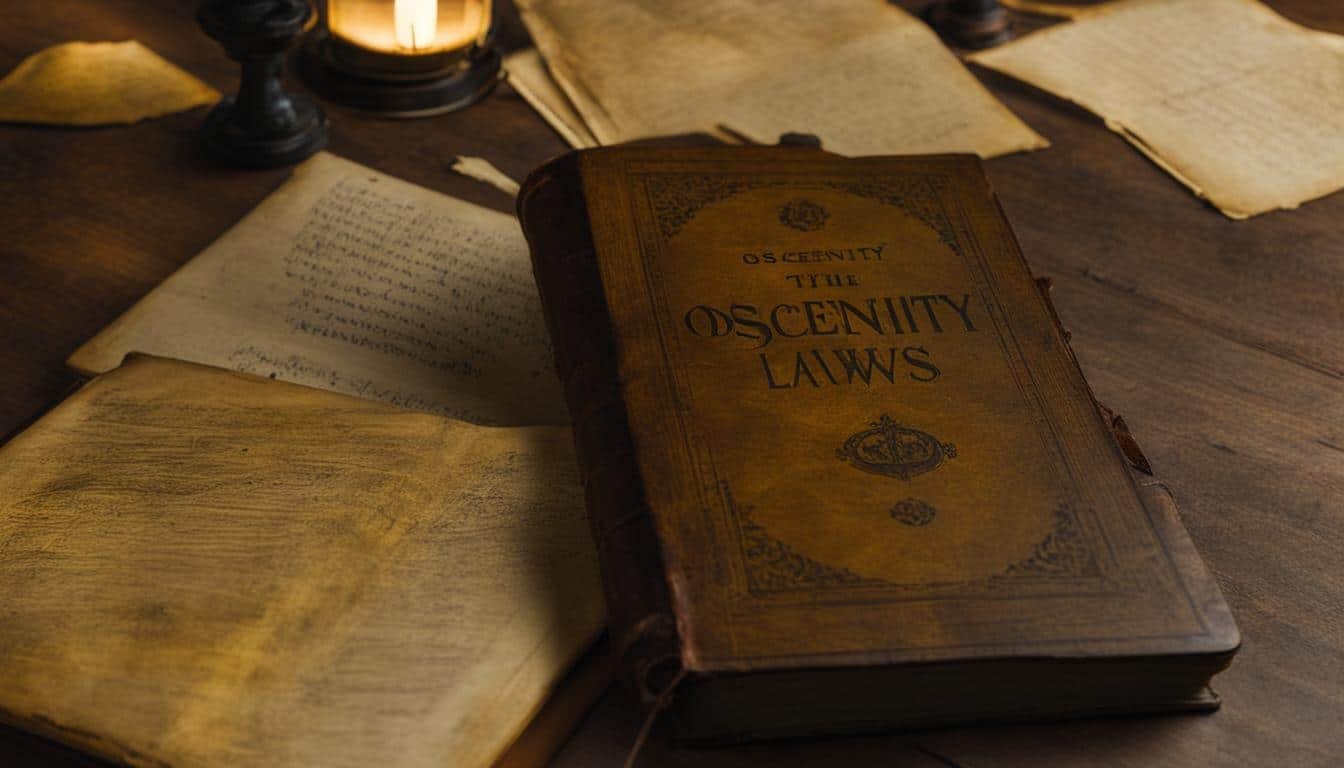When it comes to literature, obscenity laws can greatly influence what can be published and read. The legal regulations surrounding explicit content in literary works vary from country to country, and understanding these laws is crucial for authors, publishers, and readers alike. In this article, we will explore the obscenity laws of nine different countries, shedding light on their unique approaches and how they handle explicit content in literature.
Key Takeaways:
- Literature obscenity laws differ from country to country.
- Understanding these laws is important for anyone involved in publishing or reading explicit content.
- Each country has its own specific laws and guidelines regarding obscenity in literature.
- The United States has a complex legal framework that does not consider obscenity as protected under freedom of speech.
- The Obscene Publications Act of 1959 in the United Kingdom defines obscenity based on its potential to corrupt.
Obscenity Laws in the United States
The United States has a complex legal framework when it comes to obscenity in literature. The First Amendment of the U.S. Constitution protects freedom of speech, but obscenity is not considered protected under this right. This distinction has led to the development of obscenity laws that aim to regulate explicit content in literary works.
A key aspect of obscenity laws in the United States is the Miller test. Established by the U.S. Supreme Court in the landmark case Miller v. California, this test helps determine whether a work is obscene or falls under protected speech. The Miller test considers three criteria: whether the average person, applying contemporary community standards, would find that the work appeals to prurient interests; whether the work depicts or describes sexual conduct in a patently offensive way; and whether the work, as a whole, lacks serious literary, artistic, political, or scientific value.
The U.S. Supreme Court has also provided guidelines for what constitutes obscenity in literature. In the case of Roth v. United States, the Court stated that obscenity is not protected speech and is outside the realm of the First Amendment. However, the Court has recognized that the determination of obscenity is a complex and subjective matter, often requiring a careful examination of the work in question.
Obscenity Laws and Censorship
Obscenity laws in the United States are intended to balance the protection of free speech with the need to regulate explicit content. While the First Amendment protects the right to express oneself, obscenity laws ensure that certain works that are deemed offensive or inappropriate for public consumption are restricted.
“Obscenity is not protected under the First Amendment. It falls outside the realm of free speech, as recognized by the U.S. Supreme Court.”
These laws, however, have been the subject of ongoing debate and controversy. Critics argue that obscenity laws can infringe upon freedom of expression and potentially stifle artistic creativity. Supporters, on the other hand, believe that such laws are necessary to maintain public morality and protect vulnerable individuals, particularly children, from explicit and harmful material.
| U.S. Obscenity Laws at a Glance | Overview |
|---|---|
| Miller Test | The test used to determine whether a work is obscene or protected speech. |
| Subjectivity | The determination of obscenity is subjective and often requires careful examination. |
| Balancing Act | Obscenity laws aim to balance free speech rights with the regulation of explicit content. |
As with any legal framework, the interpretation and application of obscenity laws in the United States continue to evolve. Court rulings and societal norms shape the boundaries of what is considered obscene, ensuring that the balance between protected speech and the regulation of explicit content is maintained.
Obscenity Laws in Other Countries
While the United States has its unique approach to obscenity laws in literature, other countries also have their own regulations and perspectives. Let’s explore some notable examples.
The United Kingdom
In the United Kingdom, obscenity in literature is governed by the Obscene Publications Act of 1959. This legislation takes into account the potential of a work to deprave and corrupt its readers. It provides a legal framework to determine what is considered obscene and allows for the prosecution of offensive literary content.
Germany
Germany has strict laws regarding obscenity in literature. These laws consider factors such as the potential harm to minors and the distribution of explicit sexual material. The German legal system takes a strong stance against content that could be deemed harmful or offensive to society, especially when it comes to protecting young readers.
France
France has a rich history of controversial literary works, but its obscenity laws are relatively lenient compared to other countries. While there are still legal restrictions, France generally allows for greater freedom of expression in literature. This has resulted in an environment that fosters artistic creativity and encourages exploration of provocative themes.
Australia
Australia has the Classification Board, which rates and restricts certain literature based on age and content. This classification system aims to protect readers from potentially obscene or harmful material, particularly minors. By assigning appropriate classifications, Australia seeks to strike a balance between freedom of expression and the need to safeguard vulnerable audiences.
These examples demonstrate the diversity of obscenity laws across different countries. While some nations take a stricter approach, others prioritize artistic freedom and encourage provocative literature within certain boundaries. It is important to understand these legal variations when exploring literary works from around the world.
Source Links
- https://scholarship.law.stjohns.edu/cgi/viewcontent.cgi?article=1167&context=tcl
- https://oxfordre.com/literature/display/10.1093/acrefore/9780190201098.001.0001/acrefore-9780190201098-e-1254?rskey=6xwXWr&result=60
- https://chicagounbound.uchicago.edu/cgi/viewcontent.cgi?article=2980&context=journal_articles







